What is a Nurse Practitioner Cover Letter?
A Nurse Practitioner (NP) cover letter is a critical document that accompanies your resume when applying for a job. Consider it your first introduction to the hiring manager. Unlike a resume, a cover letter allows you to highlight your skills, qualifications, and experience in a more detailed and personalized way. It is your opportunity to showcase why you are the best fit for the role. A well-crafted cover letter should go beyond simply repeating your resume. It is where you connect your unique attributes to the job requirements and express your enthusiasm for the position and the company. This can significantly increase your chances of getting an interview.
Why Is a Cover Letter Important?
In the competitive field of Nurse Practitioners, a well-written cover letter can make a significant difference in your job search. It is your chance to create a strong first impression and stand out from other applicants. It showcases your communication skills, attention to detail, and genuine interest in the position. Hiring managers often use cover letters to assess your writing ability and how well you might fit within their team. A great cover letter lets you highlight your unique strengths, address any potential gaps in your resume, and add context to your qualifications. It gives you the space to specifically state why you’re interested in a particular job and how your career goals align with the employer’s needs. Neglecting a cover letter means missing an opportunity to make a lasting impression.
Key Elements of a Nurse Practitioner Cover Letter
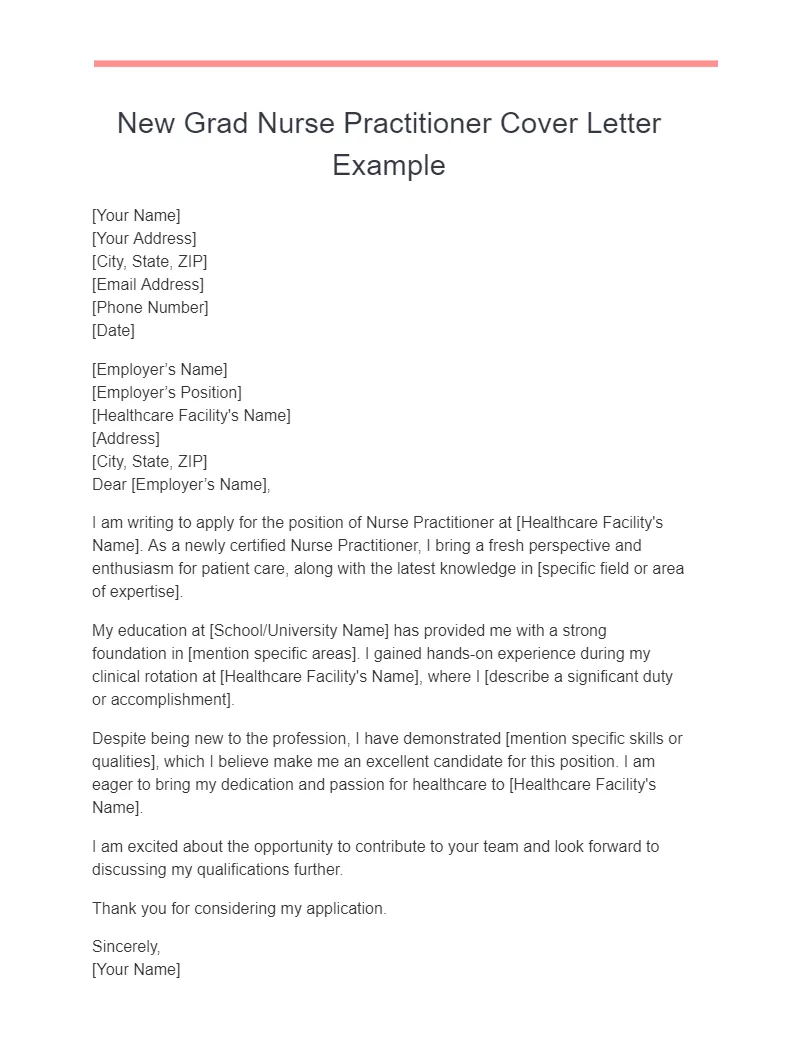
An effective Nurse Practitioner cover letter includes several key components. These elements, when combined correctly, present a professional and compelling narrative to potential employers. Proper formatting and thoughtful organization are vital. The letter should start with a professional header that includes your contact information and the date, followed by the recipient’s details. The body of the letter should then be divided into distinct sections, each with a specific purpose: an engaging introduction, a section highlighting your qualifications and experience, a discussion of your achievements, and a conclusion that expresses enthusiasm and includes a call to action. Make sure each part clearly conveys your suitability for the role. Each part should be written clearly and organized well.
Header Section Details
The header of your Nurse Practitioner cover letter sets the tone for the entire document. It should be properly formatted and contain your contact information, the date, and the recipient’s details. This header establishes your professionalism and provides easy ways for the employer to contact you. Inaccurate formatting or missing information in this section can undermine your professionalism. Always ensure accuracy and consistency in the details you provide. Proper formatting includes using a clear, readable font, and appropriate spacing and alignment. A well-organized header demonstrates your attention to detail and respect for the hiring manager’s time.
Contact Information
Include your full name, phone number, email address, and LinkedIn profile URL if applicable. Make sure your email address is professional and appropriate for use. Use a current, reliable phone number where you can be reached easily. Your LinkedIn profile, if included, should be current and reflect your professional experience. Make it easy for the hiring manager to contact you by providing accurate and accessible contact details. This is a simple, yet important step for facilitating communication and advancing in the application process. Make sure all contact information is accurate before you submit your cover letter, to prevent any delays.
Date
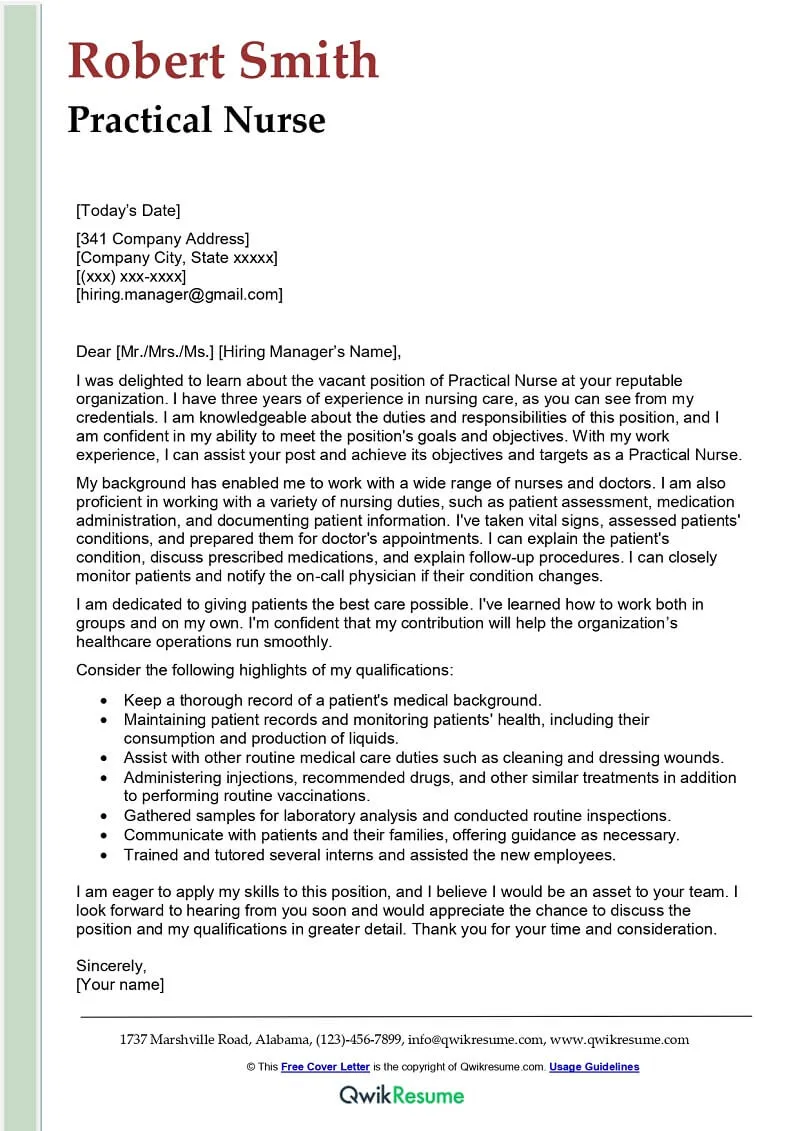
The date should be the current date when you are submitting your application. Place it directly below your contact information, typically aligned to the left or right. Use a standard date format to maintain professionalism. The inclusion of the current date adds to the overall organization and credibility of your cover letter. It shows that you are actively seeking employment.
Recipient’s Information
Whenever possible, address your cover letter to a specific person (the hiring manager or the person listed in the job posting). Research the company’s website or LinkedIn to find a specific name. If you can’t find a specific name, use a professional salutation, such as “Dear Hiring Manager” or “Dear [Department Name] Hiring Team”. Addressing the letter to a specific person shows initiative and that you’ve done your homework. This personalizes your application and makes it more likely to be noticed. It signals that you have taken the time to understand the company and the role.
Professional Salutation
Start your cover letter with a professional salutation, such as “Dear Mr./Ms./Dr. [Last Name]” if you know the hiring manager’s name. If you don’t know the name, choose a general, but professional salutation like “Dear Hiring Manager.” Avoid informal greetings, which sets the tone for the entire letter and shows respect. An incorrect salutation or an informal greeting can detract from your professionalism. A well-chosen salutation immediately sets a positive and respectful tone, which is crucial for making a good first impression. Always verify the correct spelling of the recipient’s name and title.
Body Section Strategies
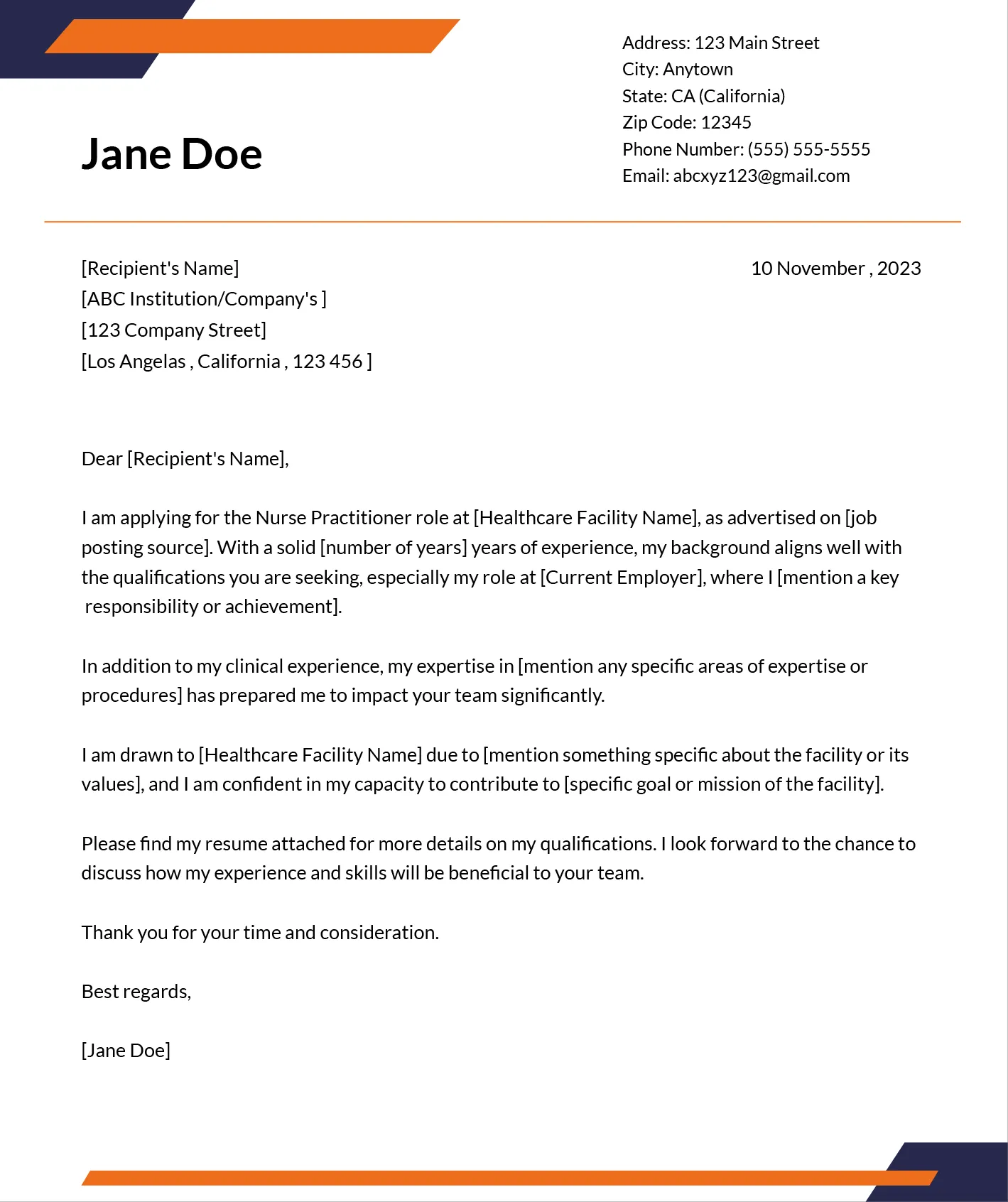
The body of your Nurse Practitioner cover letter is where you make your case for why you are the best candidate. This section requires careful planning and strategic writing to effectively highlight your qualifications, experience, and achievements. Each paragraph should serve a specific purpose, contributing to the overall narrative and demonstrating your suitability for the role. Organize your content to clearly and concisely communicate your strengths and align them with the job requirements. Use strong action verbs and quantify your achievements to make a lasting impression. The body section should convince the hiring manager that you have the skills and experience to excel in the position.
First Paragraph: Grab Attention
Your first paragraph should immediately capture the reader’s attention. Begin with a compelling statement that highlights your interest in the position and the company. You could mention how you learned about the opportunity and what specifically attracted you to it. Also, briefly state your key qualifications and why you’re a good fit. This opening paragraph sets the tone for the rest of the letter and encourages the reader to keep reading. This is your chance to create a strong first impression. A well-crafted opening can pique the interest of the hiring manager and make them want to learn more about you. Avoid generic openings; instead, personalize your introduction to showcase your unique interest and skills.
Highlight Your Qualifications
In the subsequent paragraphs, expand on your qualifications, focusing on those that are most relevant to the job description. Match your skills and experiences to the specific requirements listed in the job posting. Use examples to illustrate your expertise and show how you have successfully applied your knowledge in previous roles. Tailor your letter to each specific job application. Highlight the qualifications the employer is looking for. Demonstrate your understanding of the role and the value you will bring to the organization. Show, don’t just tell. Provide evidence of your skills and abilities. This might include specific certifications, training, or accomplishments that make you the ideal candidate. Make sure you highlight all of your key qualifications.
Showcase Your Experience
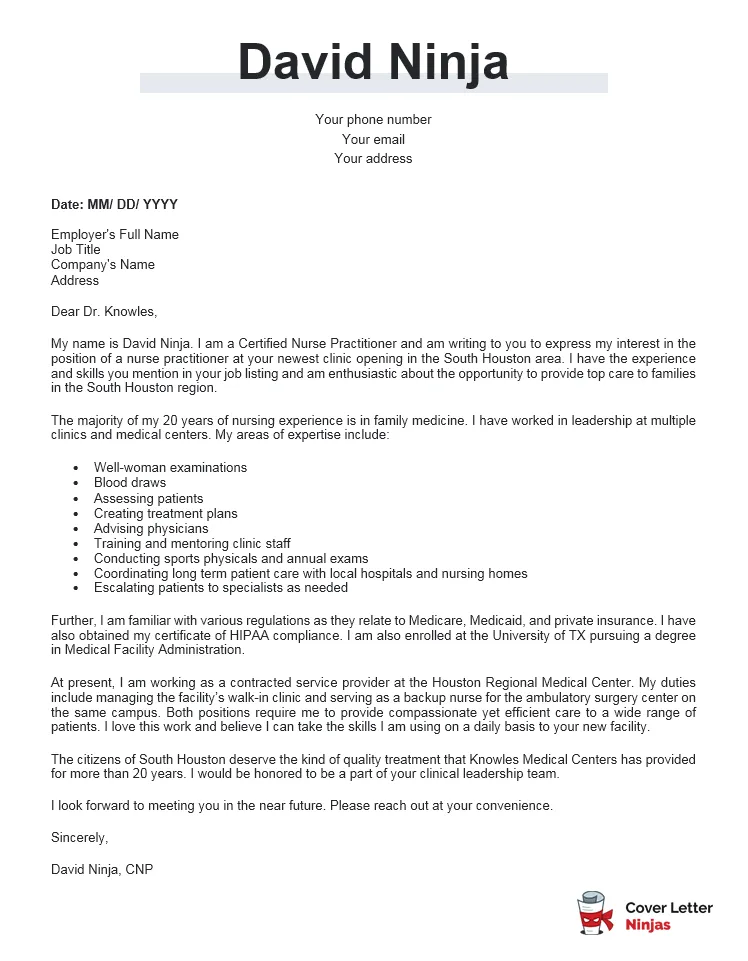
Use this section to provide details about your relevant experience as a Nurse Practitioner. Describe your previous roles, responsibilities, and accomplishments. Emphasize experiences that align with the job requirements. Rather than simply listing your job duties, explain how you used your skills to achieve positive outcomes. Provide specific examples of situations you’ve encountered and how you resolved them. This helps employers understand how your experiences translate into practical skills and abilities. Include any specialized areas of expertise or certifications that are relevant to the position. Detail any projects you managed, and any successful collaborations you were a part of.
Quantify Your Achievements
Wherever possible, quantify your achievements with numbers and data. For example, instead of stating, “Improved patient outcomes,” say, “Increased patient satisfaction scores by 15% in six months.” Quantifying your accomplishments provides concrete evidence of your abilities. Use metrics to show your impact on previous organizations. This data-driven approach makes your claims more credible and demonstrates your ability to achieve measurable results. Use specific examples of how you have positively impacted patient care, efficiency, or cost savings. Showing tangible results highlights your value as a Nurse Practitioner, setting you apart from other applicants.
Express Your Enthusiasm
Throughout your cover letter, express genuine enthusiasm for the position and the organization. Show that you are passionate about nursing and eager to contribute your skills and expertise. Mention what attracts you to the specific role and what excites you about the opportunity. A positive attitude and genuine interest can make a significant difference. This enthusiasm indicates your commitment to the job and your willingness to go above and beyond. Let your passion for patient care and professional growth shine through. Employers are more likely to hire someone who is genuinely excited about the opportunity and the organization. Be sure that your interest shows in the letter.
Tailor Your Letter

Customize each cover letter for the specific job and company you are applying to. Avoid sending generic cover letters. Research the company and the role, and tailor your letter to align with their values, mission, and requirements. Highlight the skills and experiences that are most relevant to the specific job description. Personalize your letter by mentioning specific projects, initiatives, or aspects of the company that resonate with you. Tailoring your letter demonstrates your genuine interest and commitment to the position. This shows that you have taken the time to understand the company and what they are looking for in a candidate. Customization can significantly improve your chances of getting an interview. Generic cover letters will not stand out.
Closing Section Strategies
The closing section of your Nurse Practitioner cover letter is a critical element that brings your letter to a close and encourages further action. It should be concise, professional, and leave a positive and lasting impression. It includes expressing gratitude, providing a call to action, and concluding with a professional closing and signature. A well-crafted closing reinforces your interest in the position and demonstrates your professionalism.
Express Gratitude
Begin the closing section by expressing your gratitude for the reader’s time and consideration. Thank the hiring manager for considering your application and for the opportunity to apply for the position. A simple, “Thank you for your time and consideration,” goes a long way in showing respect and professionalism. Expressing gratitude reinforces your positive attitude and leaves a good impression. It shows that you value the opportunity and appreciate the effort the hiring manager has put into reviewing your application. Expressing gratitude is very important.
Call to Action
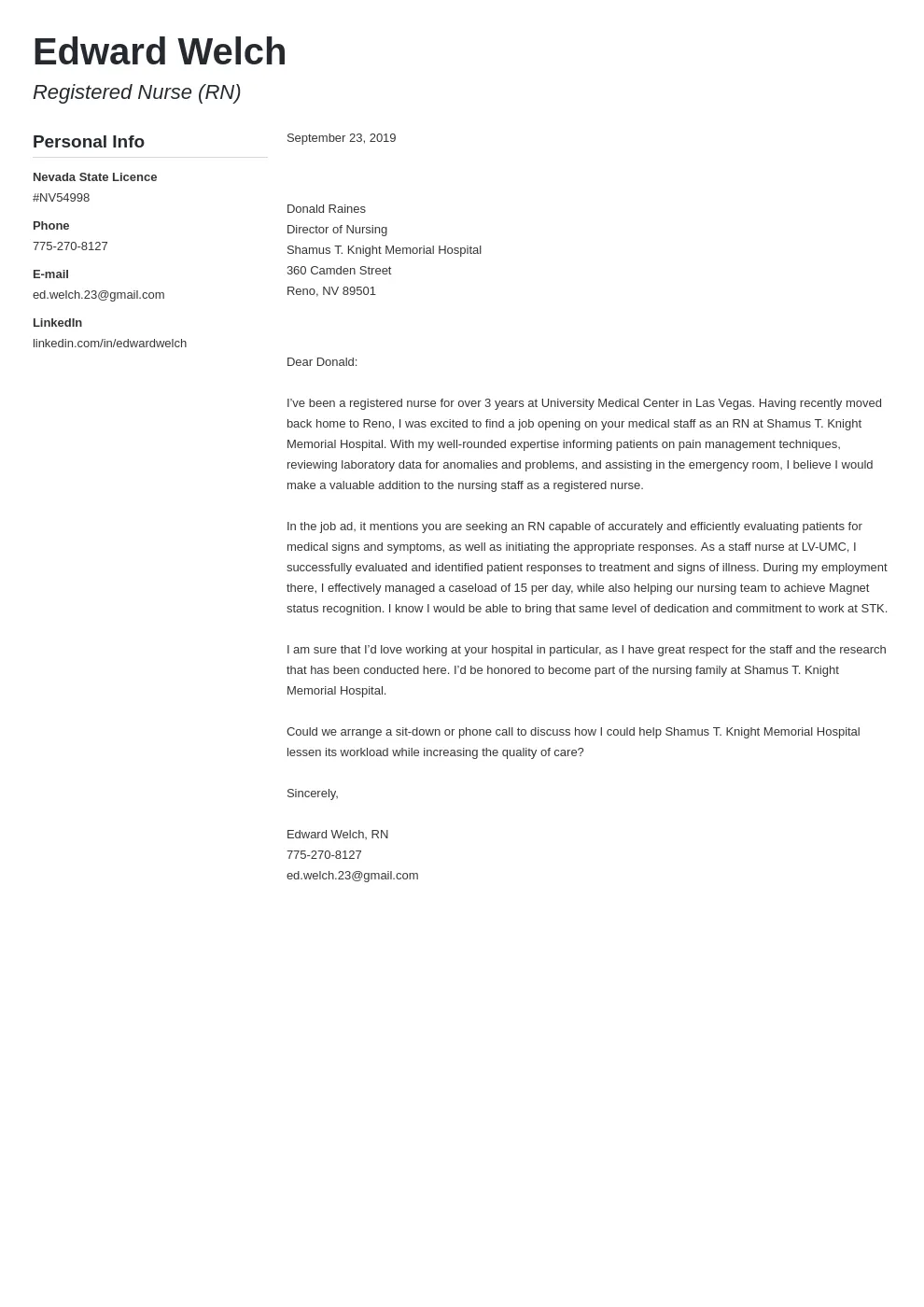
Include a clear call to action. Express your interest in an interview and specify how you can be reached. Indicate your availability for an interview and encourage the hiring manager to contact you. Providing your contact information again makes it easy for the hiring manager to take the next step. A call to action prompts the hiring manager to take the next step. It shows your eagerness and initiative. A clear call to action increases the likelihood of receiving an interview invitation. State that you are looking forward to discussing the opportunity further. This will help you to stand out to the hiring manager.
Professional Closing and Signature
End your cover letter with a professional closing such as “Sincerely,” “Best regards,” or “Respectfully,” followed by your typed name. If you are sending a physical copy, sign your name above your typed name. Ensure your closing reflects your professionalism and respect for the recipient. A professional closing reinforces the tone of your letter and leaves a positive impression. A signature adds a personal touch to your cover letter. Double-check your closing and signature before submitting your cover letter. Using the correct closing and signature shows that you pay attention to details. Always make sure your cover letter is polished before submitting it.
Cover Letter Examples Nurse Practitioner Templates
Utilizing templates is a great way to begin building your cover letter. Use these templates as a starting point, customizing them to fit your unique experience and the specific job you are applying for. The goal is to showcase your skills and experience. Focus on the requirements of the job and adjust the letter to fit what the employer is looking for. By taking the time to customize a template, you create a letter that stands out and impresses hiring managers. These templates can save you time and ensure you include all the essential components of a cover letter.
Template 1 Focus on Clinical Skills
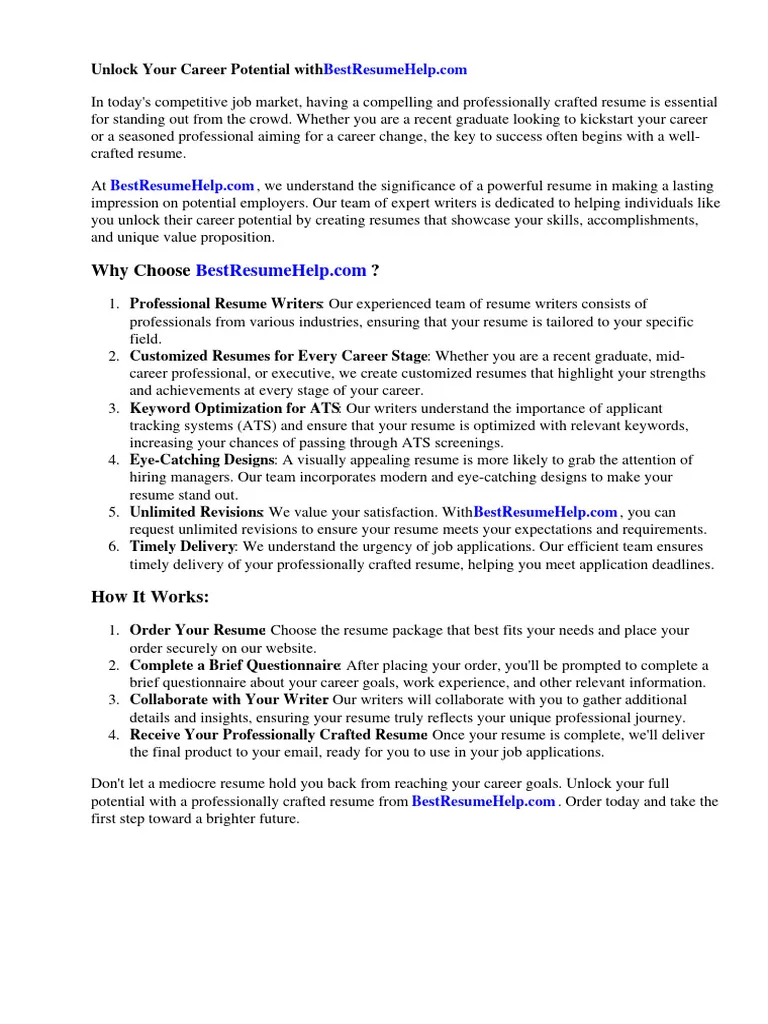
This template is designed for NPs with strong clinical skills. The letter should emphasize the ability to diagnose and treat patients, order and interpret diagnostic tests, and develop treatment plans. This template is great for nurse practitioners focusing on patient care and hands-on treatment. It should emphasize skills like physical assessments, medication management, and patient education. If your experience is strong in areas like primary care or specialized clinical settings, this template will be a good fit. Include specifics about your ability to manage patient cases, implement clinical protocols, and deliver compassionate care. This template will showcase your ability to deliver great patient outcomes and be a reliable clinical professional. Be sure to list all of your key clinical skills.
Template 2 Focus on Leadership Experience
This template is ideal for NPs with experience in leadership roles. It highlights your leadership skills, such as managing a team, implementing new protocols, or improving patient outcomes through leadership. It’s perfect if you have led other nurses, implemented improvements in a medical practice, or were in charge of overseeing patient care. This works best if you have experience with managing projects. Include any experience with staff training, policy creation, or other areas of leadership. Highlight successful projects, team-building efforts, and how you’ve improved processes, such as workflow improvements. This will demonstrate your ability to inspire and lead a team. Emphasize your ability to lead others.
Template 3 Focus on a Specific Specialty
This template is designed for NPs with experience in a particular specialty, such as cardiology, dermatology, or pediatrics. It should highlight your expertise in that area and your ability to provide specialized care. If you are a specialist, use this template to showcase your advanced knowledge and experience. Customize the template to align with the specific job, highlighting relevant certifications and specialized training. Demonstrate that you understand your specialty area and can provide high-quality care to patients with specific needs. Emphasize any experiences you have in that specific area of medicine. This will show employers your professional expertise. Be sure to list any specialties that you have.
Proofreading and Formatting
Before submitting your Nurse Practitioner cover letter, proofreading and formatting are essential steps. These final touches can make a huge difference in the quality of your cover letter, ensuring it is polished and professional. Proofreading helps eliminate errors that could undermine your credibility, while proper formatting makes your letter easy to read. Take the time to carefully review your letter to avoid mistakes that could jeopardize your application. This includes checking for grammatical errors, spelling mistakes, and formatting inconsistencies. Proper formatting increases readability and makes a positive impression on the hiring manager. A well-formatted and error-free cover letter shows that you pay attention to detail and take pride in your work.
Formatting Tips
Use a clean and readable font, such as Times New Roman, Arial, or Calibri. Choose a font size between 10 and 12 points. Maintain consistent formatting throughout your letter, including spacing, margins, and alignment. Ensure the letter is well-organized with clear sections and headings. Use a professional and easy-to-read format to present your information. Avoid complex fonts or excessive use of bolding, underlining, or italics. Properly formatted, easy-to-read documents are essential to creating an overall positive impression. Consistency and organization ensure that your cover letter is visually appealing and easy for the hiring manager to navigate. Well-formatted letters leave a positive impression.
Proofreading Checklist
Carefully proofread your cover letter for any grammatical errors, spelling mistakes, or typos. Check for punctuation errors, such as incorrect use of commas, semicolons, or apostrophes. Verify that all names, dates, and contact information are correct. Ensure the letter flows logically and that your points are clearly articulated. Read your cover letter out loud to catch any awkward phrasing or errors. Use grammar and spell-checking tools, but do not rely on them solely. Have someone else review your cover letter to provide a fresh perspective. A thorough proofreading process increases the quality of your cover letter, ensuring that it is error-free and professional. A good proofreading process ensures that your cover letter is polished and professional. Multiple proofreads are essential.
Common Mistakes to Avoid
Avoid making common mistakes that could undermine your Nurse Practitioner cover letter. These errors can hurt your chances of being selected for an interview. Avoiding these pitfalls helps you make a better impression. Be aware of the common errors and how to avoid them. Making sure your cover letter is perfect increases your chances of a positive outcome. Common mistakes can be easily avoided with careful planning and attention to detail. Make sure that you avoid common mistakes.
Lengthy Letters
Keep your cover letter concise and to the point. Aim for a one-page letter, as hiring managers may not have time to read lengthy documents. Only include the most relevant information. Avoid unnecessary details or long paragraphs. A concise letter shows that you respect the hiring manager’s time and can communicate effectively. Focus on the essential information and get your points across efficiently. Excessive length can cause the reader to lose interest. Prioritize clarity and directness over lengthy explanations. Make sure you are concise in your letter.
Generic Content
Avoid using a generic cover letter that could be sent to any job. Always tailor your letter to the specific job description and the company. Personalize your letter to show that you have done your research and understand the role. Include details that demonstrate your specific interest in the position and the organization. Generic content indicates a lack of interest and effort. A tailored letter shows that you are serious about the job and willing to put in the extra effort. Make sure the letter showcases your qualifications for the job you’re seeking. Always be specific in your letter.
Typos and Grammatical Errors
Typos and grammatical errors can make your cover letter look unprofessional. Proofread your letter carefully to eliminate any mistakes. Use grammar and spell-checking tools. Ask someone else to review your letter for errors. Errors indicate a lack of attention to detail and can detract from your credibility. Proofreading ensures that your cover letter is polished and presents you as a detail-oriented professional. Errors are easily avoidable with careful proofreading. Multiple proofreads will help you to avoid errors.
Additional Tips
In addition to the core elements of a Nurse Practitioner cover letter, here are a few extra tips that can boost your application and increase your chances of getting an interview. These strategies can set you apart from other candidates. Using these tips can help you. Adding these touches will enhance your cover letter and showcase your professionalism and commitment. These will also help you to stand out from other candidates.
Research the Company
Before writing your cover letter, research the company thoroughly. Understand their mission, values, and recent achievements. Learn about their services, patient demographics, and culture. Mentioning specific details about the company demonstrates your interest and shows that you’ve done your homework. This research also allows you to tailor your letter to highlight how your skills align with the company’s needs. Demonstrating that you understand their business goals will show that you are seriously interested in the role. Doing company research will help you to stand out to the hiring manager.
Use Keywords
Use keywords from the job description throughout your cover letter. This helps the hiring manager quickly see that you meet the job requirements. Incorporate the keywords naturally, avoiding keyword stuffing. Highlight the skills and experiences that match the job requirements. Keywords can also help your application pass through Applicant Tracking Systems (ATS). Keywords in your cover letter make it easy for employers to find you. Properly using keywords in your cover letter will increase your chances of your application being reviewed. Use keywords naturally.
Follow Up
After submitting your cover letter and resume, follow up with the hiring manager or the contact person listed in the job posting. Send a brief email a week or two after submitting your application to express your continued interest. Confirm that they received your application and ask if they need any additional information. Following up shows your initiative and demonstrates your eagerness for the position. Make sure the follow-up email is professional and concise. A well-timed follow-up can help you stay top of mind during the hiring process. Following up is a polite way to re-introduce yourself and is a great way to demonstrate your interest in the position.
